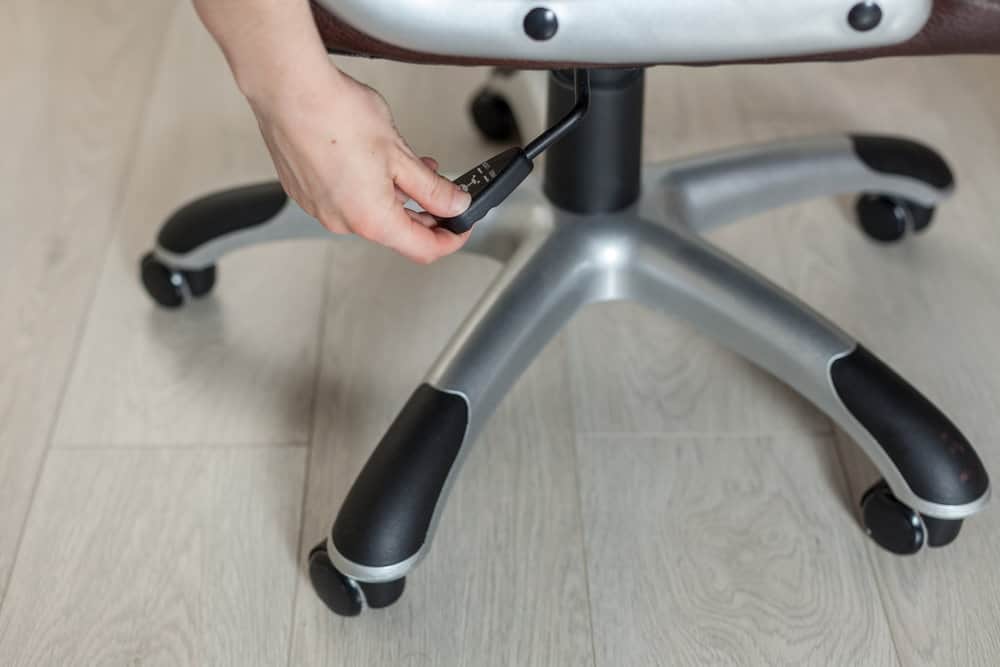Types of Chair Locks: How To Lock Chair Back

You’ve finally found the perfect chair, but you need to keep it safe and sound. Perhaps you’re worried about a little too much chair-sliding during exciting Zoom meetings, or maybe you have a mischievous toddler who loves to turn everything into a jungle gym. Whatever the reason, locking your chair can be a lifesaver (or at least a chair-saver!). Let’s dive into the world of chair locks and see which type fits your needs.
Types of Chair Locks
Chair locks come in various forms, each designed to tackle different challenges. Let’s explore these lock types, their advantages, disadvantages, and applications.
- Wheel Locks: These are the most common type of chair lock. They work by locking the chair’s wheels, preventing it from moving. Wheel locks are usually simple to use, with a lever or button that engages the locking mechanism. They are widely available and relatively inexpensive.
- Base Locks: These locks are designed to lock the chair’s base to the floor, effectively preventing the chair from tilting or rotating. They are typically more secure than wheel locks and are often used in high-traffic areas or environments where stability is crucial. Base locks can be found in various designs, including locking pins, swivel locks, and base plates.
- Backrest Locks: These locks focus on securing the chair’s backrest, preventing it from reclining. They are commonly used in office chairs and are particularly useful in situations where you need to maintain a specific posture or prevent accidental reclining. Backrest locks can be manual or automatic, with some models featuring adjustable locking positions.
- Height Locks: These locks prevent the chair from adjusting its height. They are commonly found in chairs designed for specific tasks, such as laboratory chairs or those used in industrial settings. Height locks ensure consistent working height and prevent accidental adjustments.
Comparison of Chair Locks, How to lock chair back
Here’s a table comparing the advantages and disadvantages of each type of chair lock:
| Type of Lock | Advantages | Disadvantages |
|---|---|---|
| Wheel Locks | Easy to use, widely available, inexpensive | Can be easily bypassed, may not be secure enough for high-traffic areas |
| Base Locks | More secure than wheel locks, suitable for high-traffic areas | Can be more expensive, may require installation |
| Backrest Locks | Prevents accidental reclining, maintains posture | May limit chair’s functionality, can be inconvenient for certain tasks |
| Height Locks | Ensures consistent working height, prevents accidental adjustments | Can be inflexible, may not be suitable for all tasks |
Visual Representation of Chair Locks
- Wheel Locks: Imagine a simple lever or button located on the side of the chair’s wheel. When engaged, the lever or button locks the wheel in place, preventing it from rotating.
- Base Locks: Think of a locking pin or swivel mechanism that connects the chair’s base to the floor. This prevents the base from tilting or rotating.
- Backrest Locks: Envision a lever or button located on the back of the chair, near the backrest adjustment mechanism. This lever or button engages a locking mechanism that prevents the backrest from reclining.
- Height Locks: Picture a locking mechanism located on the chair’s gas lift cylinder, preventing the cylinder from extending or retracting. This effectively locks the chair at a specific height.
How to lock chair back – Locking a chair back typically involves a simple mechanism, often a lever or button, that secures the backrest in its upright position. However, if you’re dealing with a recliner, the process can be a bit more involved. You might need to consult a guide on how to remove the back of a recliner chair to understand its specific mechanism.
Once you’ve removed the back, you can then focus on locking the chair back in place.
Securing a chair back can be a simple matter of a well-placed screw or a clever locking mechanism, but for a truly timeless piece, consider the elegance of a thumb back windsor chair. These chairs, with their distinctive backs crafted from hand-shaped spindles, often feature a unique locking mechanism that adds to their enduring beauty.
While the exact method of locking may vary, understanding the chair’s design and construction can help you find the right solution for securing its back.